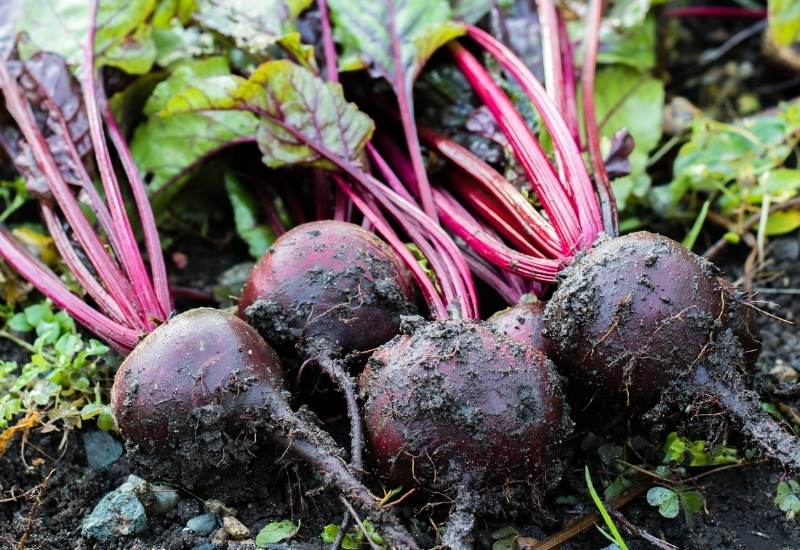
Beets are a very easy vegetable to grow, but a common question is when are beets ready to harvest. Because beets grow underground, you cannot see their progress and it is often difficult to determine how mature they are.
If you take them out too early, you risk pulling small beetroots that are not as flavorful nor as nutritious, but if you take them out too late they can be woody and not as tasty.
A beet is a root vegetable that grows well in cool temperatures and takes up to 70 days before it’s ready for harvest. When the size of your roots matches between a golf ball and tennis ball, you’re good to go!
In this article, we will look at how you can tell if your beets are ready to be harvested and discuss the best way to harvest and store beets so you can preserve your bountiful harvest to enjoy throughout the winter.
Let’s learn the answers to some commonly asked questions about harvesting beets.
1: How Do I Know If My Beets Are Ready To Harvest?
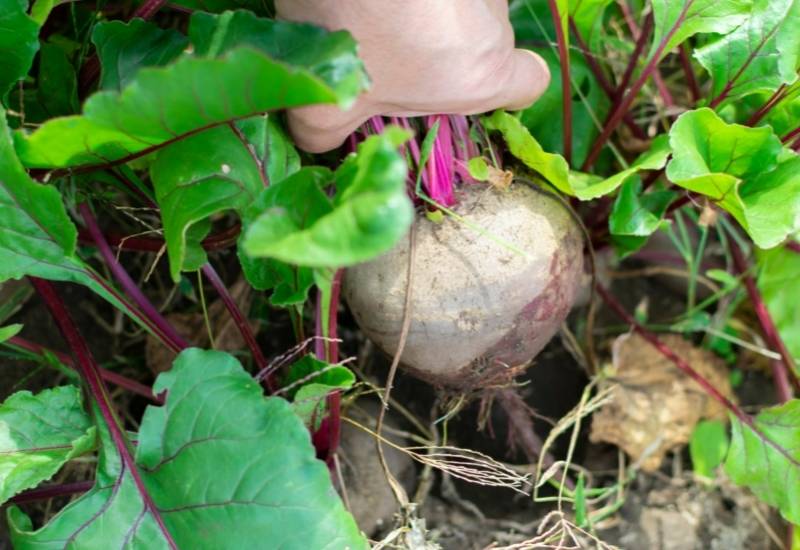
Beets should be ready for harvest about 50-70 days after sowing seeds, depending on the variety. Signs of maturity can be identified by their appearance. If the root matures, the tops will gradually wither. The lower leaves turn yellow, and after a while they dry out completely.
The easiest way to know if your beets are ready to harvest is to simply pull one out and see if it is the right size.
Keep reading to learn the answers to some commonly asked questions about harvesting beets.
2: How Long Do Beets Take To Grow?
Most beets take about 50 to 70 days to grow until they are a good size to harvest. Of course, as we will learn later, the beets can be eaten earlier than that and they can also be left in the ground to grow bigger roots.
When seed companies list the days to maturity for beets, they generally calculate from the day the seed germinates, which is when the leaves first pop out of the soil.
When you are planning when to plant your beets, don’t forget that the seeds will take about 5 to 12 days to germinate.
Germination at this rate requires an ideal soil temperature of around 10°C to 26°C (50°F to 80°F), so if you plant your seeds early in the spring it is important to remember that your seeds might take longer to germinate and delay your harvest a bit.
3: What Size Should Beetroots Be When I Harvest Them?

Beets come in all shapes and sizes. Some beet varieties are better when they are the size of a golf ball, while others stay tender up to 15cm (6 inches) in diameter.
Long cylindrical beets may only have a small top poking out of the soil but they might reach 20cm (8 inches) down.
Most grocery stores and markets sell beets when they are about the size of a tennis ball and this is a fairly decent size to strive for in your garden. (Though bear in mind that to reach this size might take longer than the listed days to maturity.)
Beetroots can be eaten at any size. There is a lot of disagreement over whether small beets taste better than big beets, and the internet is saturated with various opinions. This comes down to personal preference.
While it is true that large beets can become tough and woody tasting, this is not so much determined by the size and they usually have to be very mature before this will happen.
In the end, harvest your beets when they are the size that you like eating best. The number one rule for growing a home garden is to grow the food that you like eating best, so what is the point of growing a small beet, when you only like eating the large ones?
4: What is the best month to harvest beets?
With very little effort, you can harvest beets in almost every month of your growing season. With a bit of careful planning, you can even harvest them in the early spring and throughout most of the winter months depending on your climate.
Beets are a cool-season vegetable, so they can be planted in the early spring as soon as the soil can be worked and has started drying out.
In most cases, the seeds will germinate down to about 4°C (40°f) but much below this and the plants will grow but might develop a disappointing root when harvest time comes.
When beets are planted in the early spring, there are usually some decent-sized roots ready ready for pulling in the early summer.
If you want an earlier harvest, you can start your seeds indoors. Beets transplant better than many other roots vegetables so you can put them out when you would normally be direct sowing to get an early harvest.
You can plant your beets every two weeks until about 8 weeks before your first frost in the fall. Beets will grow well throughout the summer.
Being a cool-season plant, it is best to keep a close eye on them as they can grow quite quickly in the heat. This is particularly true if you live in a warm country, but is not usually a problem in more temperate climates.
Some varieties of beets are ideally suited for hot weather which won’t develop significant zoning, which are rings that are visible in the flesh of the beet.
Beets can also often grow into the late fall and early winter. They are very tolerant of frost, and will often get sweeter as the temperature drops (a process known as chill sweetening).
5: What Part Of A Beet Can I Eat?
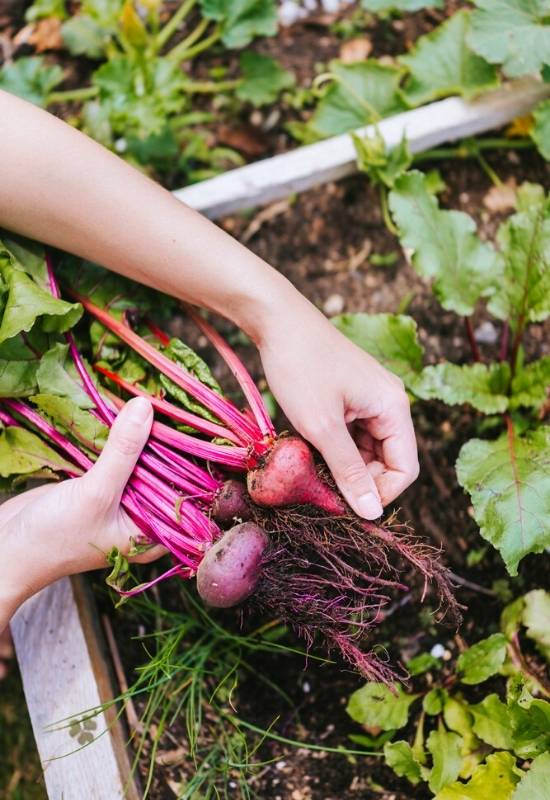
You can eat all parts of a beet and at every stage of its development. All parts of the beet can also be eaten cooked or raw depending on your culinary preferences Most commonly, beets are grown for the taproot and the leaves.
The roots are either grated fresh into a salad or roasted, steamed, boiled, sautéed, stir-fried, cooked into a soup and so much more.
The leaves are generally steamed or added to stir-fries and can replace chard or kale in many dishes.
6: Can I Harvest Beets Too Early?
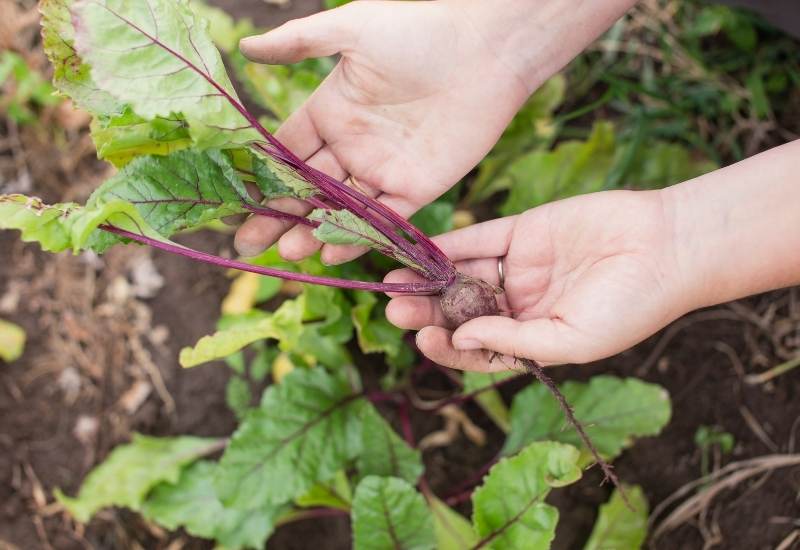
The answer to this is no, you cannot harvest beets too early. Since you can eat all parts of the beet at any stage of its growth, you can pick a beet seedling as a microgreen, or pick very small beets for a garnish or roast them whole.
Sometimes there are good reasons for harvesting beets early. One year, our garden was almost overrun with ground squirrels and pocket gophers.
These hungry critters built their tunnels amongst the beets and began nibbling on as many roots as they could. We felt it was better to harvest small beets than have no beets at all.
7: How Long Can Beets Stay In The Ground?
In most temperate climates, beets can stay in the ground from planting until harvest in the late fall. Throughout the year, pick out the largest for the dinner table and let the smaller beets continue to grow into the fall.
We generally direct sow our beets mid-march and harvest small beets through the summer as we need them. In September, we harvest the remainder of the beets and preserve or store them for the winter.
We will occasionally have a few extra-large beets that became too large and split open and became woody, but the rest of the beets are just right for us.
8: Why Are My Beets Growing So Close Together And What Can I Do About It?
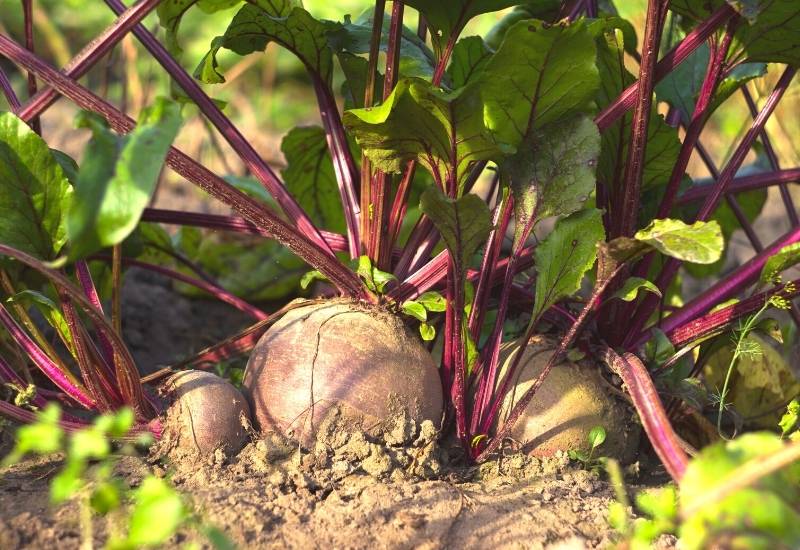
Beets seeds are actually small fruits, also called nutlets, that can contain several seeds. Many nutlets will only contain one seed, but they can also have up to 4 or 6 seeds which will each grow one beet.
We never thin out beets when they are seedlings, but prefer to wait until the roots are large enough to eat before we thin them as this gives us the most out of our crop.
However, if prefer to harvest them as seedlings, snip out the extra sprouts with scissors to avoid damaging the beets you want to leave. And don’t forget to toss the little sprout into your dinner (or right into your mouth).
9: Are Beetroots Supposed To Be Poking Out Of The Soil?
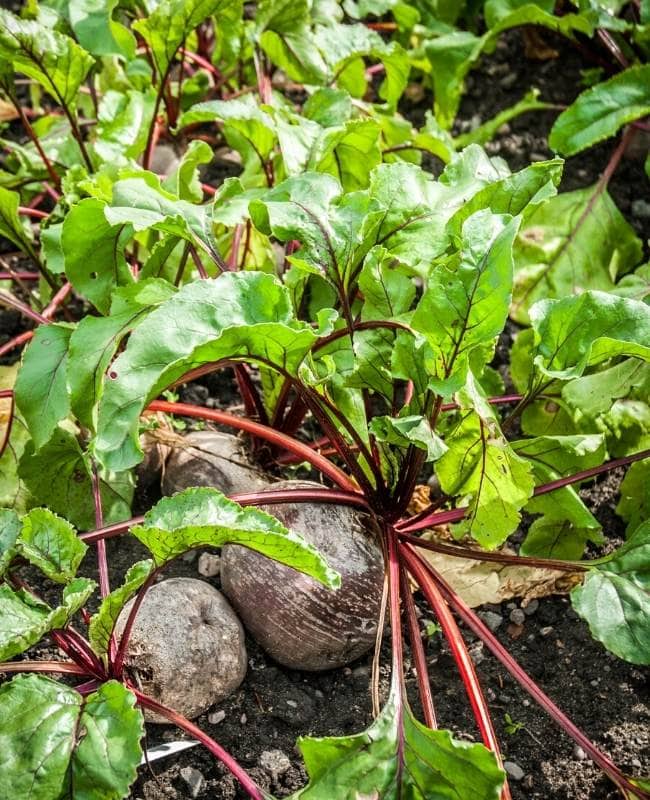
As your beets grow, they will quite often push out of the ground. This is perfectly normal and is often a good indication that your beets are getting ready to harvest. At the very least, it lets you see how they are developing.
10: Can I Harvest Beet Greens While The Root Is Still Growing?
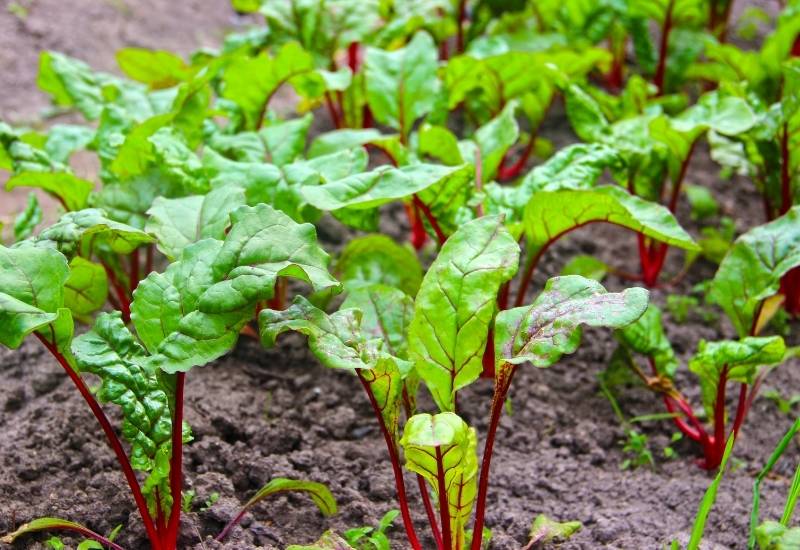
Generally, the best way to eat beet greens is to pull them from the beets you just harvested. However, you can still eat the greens throughout the season even if your beetroots aren’t ready.
You can pull a few leaves off of a growing beet. Just be careful that you do not take too many off a single beet as the leaves are vital for photosynthesis and plant growth.
How to Harvest Beets
Once you have determined that your beets are ready, it is time to harvest them. Your freshly harvested beets can then be preserved so you can enjoy them for the rest of the year.
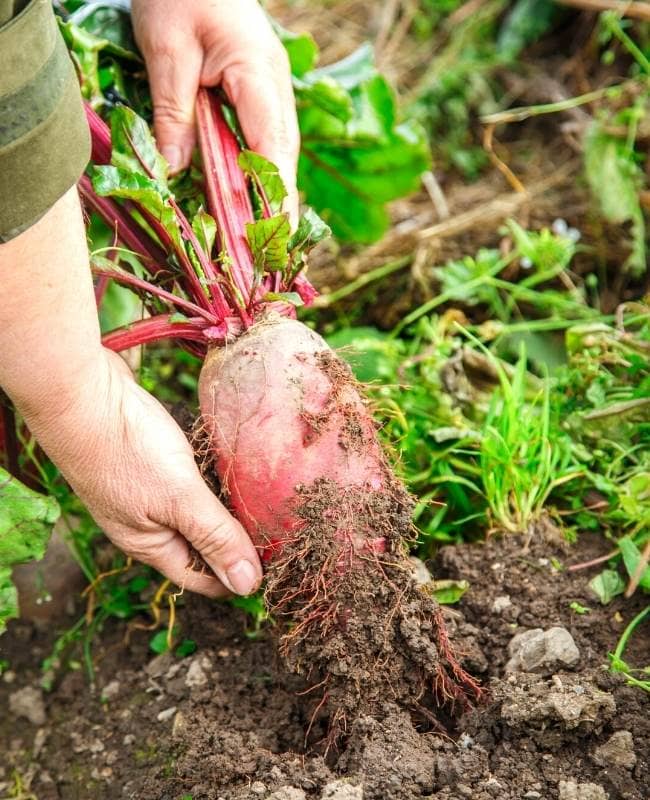
Harvesting beets is quite simple. Here is how to easily harvest your crop.
How to Store Beets
Beets can be stored and persevered in a variety of ways. You always want to twist off the tops prior to storage as the tops will rot quite quickly and spoil the root.
The best long-term storage option is to store them in damp sand where they will keep successfully for months. Alternatively, you can wash them and put them in a perforated bag in the fridge for a few weeks.
Beets can also be frozen or dried, and there are many recipes out there to can them or turn them into relish.
Conclusion
Harvesting is always an exciting time, and this is especially true with root crops such as beets which are hidden until you dig them up. By learning how to tell if your beets are ready, you will hopefully have a better harvest and a more satisfying time in the garden.

Written By
Amber Noyes
Amber Noyes was born and raised in a suburban California town, San Mateo. She holds a master’s degree in horticulture from the University of California as well as a BS in Biology from the University of San Francisco. With experience working on an organic farm, water conservation research, farmers’ markets, and plant nursery, she understands what makes plants thrive and how we can better understand the connection between microclimate and plant health. When she’s not on the land, Amber loves informing people of new ideas/things related to gardening, especially organic gardening, houseplants, and growing plants in a small space.
